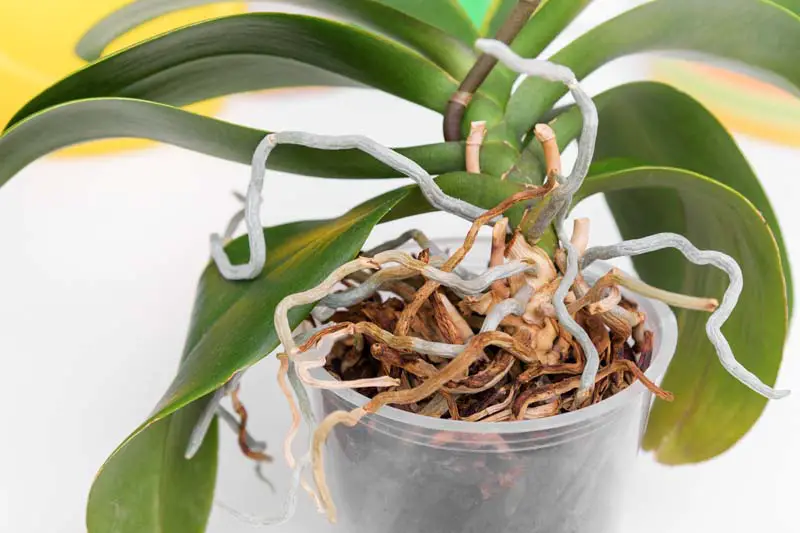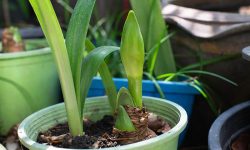Orchids are some of the most captivating and delicate flowering plants that gardeners and houseplant enthusiasts adore. Their exotic beauty and variety of colors make them a prized possession in any home or garden. However, ensuring orchids bloom consistently throughout the year can be a challenge. One of the key techniques to encourage more blooms is proper replanting or repotting. This process revitalizes the orchid’s growth environment, allowing it to thrive and bloom repeatedly.
In this article, you will learn how to replant orchid plants effectively to enjoy their gorgeous flowers year-round. We will explore the best time to replant, the materials needed, step-by-step procedures, and essential care tips to ensure your orchids stay healthy and productive.
Understanding Why Replanting Orchids Is Important

Orchids require a specific growing environment to flourish. Unlike many houseplants, orchids do not grow well in regular soil. They need a loose, well-draining medium that mimics their natural habitat, such as bark chips, sphagnum moss, or a specialized orchid mix. Over time, the growing medium breaks down, becomes compacted, and loses its ability to drain properly. This can lead to root rot, poor aeration, and ultimately fewer flowers.
Replanting orchids helps refresh the growing medium, giving roots more space and improving oxygen flow. It also allows gardeners to inspect the roots and remove any that are dead or damaged. A fresh environment encourages the orchid to focus energy on producing healthy roots and vibrant blooms. Without periodic repotting, orchids may struggle to bloom or even survive.
When Is the Best Time to Replant Orchid Plants?
Timing plays a critical role in the success of replanting orchids. Generally, the best moment to repot an orchid is just after it finishes blooming or when you observe new root growth. During this period, the orchid is in an active growth phase, making it easier to recover from the disturbance caused by repotting.
Repotting during dormancy or when the orchid is stressed can slow down recovery and may cause flowering to be delayed or reduced. Observing the plant closely will help you determine the ideal moment. Signs that an orchid needs repotting include roots growing out of the pot, the growing medium breaking down into fine particles, or visible mold or fungus on the surface.
Preparing to Replant: Materials and Tools Needed
To replant your orchid effectively, gathering the right materials is essential. Unlike typical potted plants, orchids require specific substrates and containers to support their unique root systems.
You will need a fresh orchid growing medium such as fir bark, coconut husk chips, perlite, or sphagnum moss. It is important to avoid regular potting soil, as it retains too much moisture and restricts airflow. Transparent pots with drainage holes are preferred since they allow you to monitor root health and prevent waterlogging. Additionally, you will need sterilized pruning scissors or shears for trimming roots, gloves to protect your hands, and a gentle water spray bottle to moisten the medium before repotting.
Step-by-Step Guide to Replant Orchid Plants
The replanting process begins by carefully removing the orchid from its current pot. This should be done gently to avoid breaking roots. Holding the base of the plant firmly, tip the pot sideways and ease the root ball out. If the roots are stuck, tap the pot lightly or squeeze its sides if it’s plastic. Once removed, you can inspect the roots closely.
Healthy orchid roots appear firm and white or greenish, while unhealthy roots are brown, mushy, or dry. Using sterilized scissors, carefully trim away any dead or rotten roots. Removing unhealthy roots prevents disease from spreading and allows the plant to channel nutrients to healthy parts.
Next, soak the fresh orchid medium in water to hydrate it, which helps retain moisture without causing sogginess. Place a small amount of this medium at the bottom of the new pot. Position the orchid so its roots spread naturally, and gradually fill the pot with the medium, making sure roots are well supported but not compressed.
After replanting, water the orchid lightly to settle the medium around the roots. Place the orchid in a location with indirect sunlight and good air circulation. Avoid direct sunlight initially to reduce transplant shock. Regular monitoring during the following weeks ensures the orchid adapts well to its new environment.
Caring for Your Orchid After Replanting
Post-replant care is crucial to help your orchid establish quickly and begin producing flowers again. One important factor is watering. Orchids prefer to dry out slightly between waterings, as excessive moisture can cause root rot. Water the plant only when the medium feels dry to the touch, usually about once a week depending on your local climate.
Humidity also plays a key role in orchid health. Since orchids originate from tropical environments, maintaining 50-70% humidity around the plant encourages strong growth and vibrant blooms. You can increase humidity by placing a shallow tray of water near the orchid or using a humidifier.
Temperature affects flowering cycles. Most orchids thrive in daytime temperatures between 65-75°F (18-24°C) and slightly cooler nights. Sudden temperature changes can stress the plant, so keep it away from drafts or heating vents.
Fertilizing orchids regularly with a balanced fertilizer specially formulated for orchids will provide essential nutrients. However, avoid over-fertilizing, especially immediately after repotting, as the roots may be sensitive.
Encouraging More Blooms Through Replanting Techniques
Replanting does more than just refresh the orchid’s root environment; it can directly influence flowering frequency and quality. A well-aerated and nutrient-rich growing medium allows the plant to channel its energy into producing flower spikes rather than struggling for survival.
Choosing the right size pot is also important. A pot that is too large can retain excess moisture, while one that is too small can restrict root growth. Repotting into a slightly larger pot when roots fill the previous container provides space for new roots and future growth.
During the repotting process, dividing larger orchid plants can stimulate bloom production. Splitting mature orchids into smaller sections with healthy roots encourages each division to establish independently and flower on its own cycle. However, division should be done cautiously to avoid damaging the plant.
Common Mistakes to Avoid When Replanting Orchids
Many orchid growers unintentionally hinder blooming by making simple mistakes during repotting. One frequent error is using the wrong type of growing medium, such as garden soil or potting mix, which retains too much water and suffocates roots.
Another mistake is repotting at the wrong time, such as during active blooming or dormancy, which can cause flower loss and slow growth. Also, overwatering newly repotted orchids can drown tender roots and encourage fungal infections.
Failing to remove dead roots or damaged leaves may introduce diseases into the fresh medium. Additionally, neglecting post-replant care, such as proper watering, humidity, and temperature control, prevents orchids from reaching their full blooming potential.
Signs Your Orchid Is Ready for Its Next Bloom Cycle
After replanting, patience is key, but you can watch for several signs that your orchid is preparing to bloom again. New root growth is a strong indicator that the plant is healthy and absorbing nutrients effectively. You may also notice new leaves forming, signaling vigor.
The appearance of flower spikes or buds confirms the orchid is entering its blooming phase. This usually occurs several weeks to a few months after repotting, depending on the species and environment. Maintaining consistent care during this time supports full and vibrant blossoms.
FAQ About How to Replant Orchid Plants
When is the best time to replant orchid plants?
The ideal time to replant orchid plants is right after they finish blooming or when new root growth appears. This period allows the orchid to recover quickly and encourages healthy growth without disrupting the flowering cycle.
What type of growing medium should I use for repotting orchids?
Orchids need a well-draining growing medium such as fir bark, sphagnum moss, coconut husk chips, or specialized orchid mixes. Avoid regular potting soil because it retains too much moisture and can cause root rot.
How often should I replant my orchid?
Most orchids benefit from repotting every one to two years. This helps refresh the growing medium and allows you to inspect and trim unhealthy roots, which supports continuous blooming.
Can I replant an orchid while it is blooming?
It is generally not recommended to replant an orchid during its blooming phase, as the plant is under stress and may drop flowers. Waiting until after flowering ensures a smoother transition and better recovery.
How do I care for my orchid after replanting?
After repotting, water the orchid lightly and place it in a location with indirect sunlight and good air circulation. Maintain appropriate humidity and avoid overwatering. Fertilize sparingly until the plant shows signs of new growth.
Conclusion: Replanting Orchids as a Pathway to Year-Round Blooms
Replanting orchid plants is a vital practice that directly contributes to their ability to produce beautiful blooms year-round. By carefully timing the repotting, using appropriate growing mediums, and providing diligent care afterward, orchid growers can rejuvenate their plants and stimulate frequent flowering.
Though orchids may seem delicate, understanding their specific needs and replanting them correctly transforms their growth and flowering patterns dramatically. The effort invested in replanting rewards gardeners with the joy of endless, vibrant orchid blooms that brighten any space throughout the seasons.






